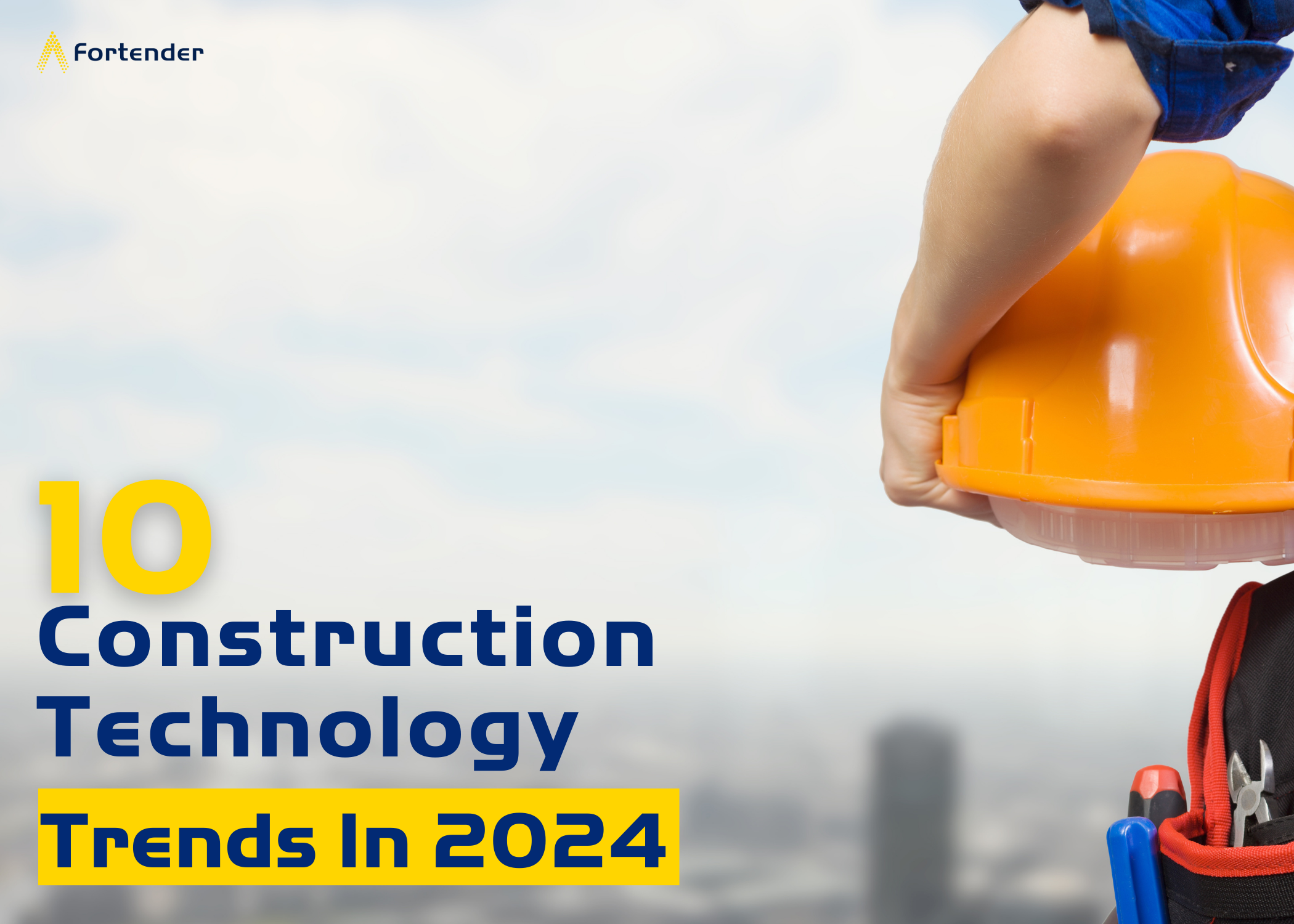
As we step into 2024, the construction industry continues its dynamic evolution driven by an array of cutting-edge technologies. These transformative trends are reshaping traditional construction practices and paving the way for a more efficient, sustainable, and collaborative future.
Here are our 10 key trends that continue to shape the construction technology market in 2024:
BIM technology continue to gain prominence. It enables construction professionals to create 3D models of buildings, facilitating better design visualization, improved collaboration, and enhanced project management. The use of BIM was becoming more widespread, especially in large-scale projects.
Cloud-based project management software and collaboration tools are increasingly widely used. These platforms enabled real-time communication, document sharing, and project tracking, enhancing productivity, and reducing administrative overhead cost. Fortender for example is a collaborative online platform that helps stakeholders manage construction tenders and procurement supporting them to bring construction projects to life much faster. Ask us how?
Prefabrication and modular construction methods are still on the rise. These techniques offer faster construction, reduced waste, and improved cost-efficiency. The adoption of off-site manufacturing has been increasing across various construction segments.
Environmental sustainability continues to gain more traction in construction. The integration of green building practices and the use of eco-friendly materials and technologies are increasing. Net-zero energy buildings and sustainable construction certifications are also gaining importance.
The Internet of Things(IoT) is still transforming construction sites. Sensors and connected devices are being used to monitor equipment, track materials, enhance safety, and improve project management. Smart construction technologies are becoming more and more important.
Drones are being widely adopted for site surveys, progress monitoring, and aerial inspections. They provide real-time data and improved safety by reducing the need for workers to access dangerous areas.
AI and machine learning applications are being used for data analytics, predictive maintenance, and project optimization. These technologies help construction companies make data-driven decisions, reducing costs and delays.
AR and VR technologies are increasingly used for design visualization, project planning, and training. They enable stakeholders to experience construction projects in a virtual environment, enhancing communication and reducing errors.
Robotics and automation are being employed for tasks such as bricklaying, concrete pouring, and site cleanup. 3D printing continues to be used in construction as well. These technologies improve efficiency and address labor shortages in the construction industry. Dubai for example is home for the (Office of the Future), the world’s first fully functional 3D-printed office.
Blockchain technology was applied to enhance transparency and traceability in the construction supply chain. It helped prevent fraud, reduce disputes, and ensure the authenticity of construction materials.
#SmartTech #ConstructionTech #ConstructionTechTrends #SmartTech #DigitalConstruction